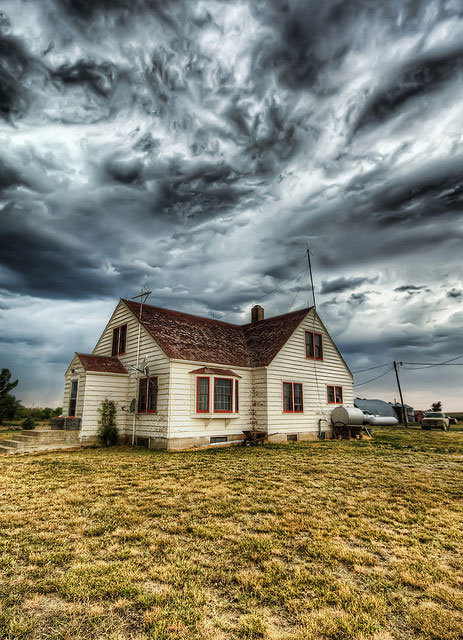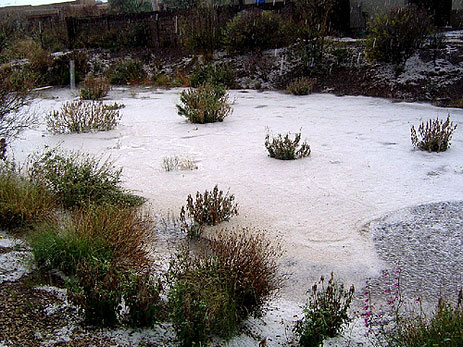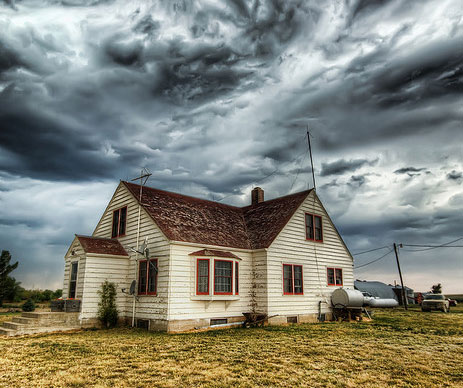 Photo: Stuck in CustomsThe Driftless region in southwestern Wisconsin is renowned for its apples, with their intense flavors favored in marketplaces as far away as Detroit. But when I arrived there in late September to search with friends for heirloom apple varieties, we had trouble finding any apples left on the trees at all.
Photo: Stuck in CustomsThe Driftless region in southwestern Wisconsin is renowned for its apples, with their intense flavors favored in marketplaces as far away as Detroit. But when I arrived there in late September to search with friends for heirloom apple varieties, we had trouble finding any apples left on the trees at all.
“This has been the strangest year for apple growing within my memory,” orchardist Dan Bussey conceded. The apple crop ripened nearly two weeks ahead of time, and due to a late frost, several late-season windstorms and most orchards, the crop in southern Wisconsin was quite sparse, he said. “Most orchards I know ran low or even out of apples by early October,” he wrote to me a few weeks later.
Bussey and his family have been using the same cider press in their community of Edgerton, Wis., for decades; ever since he purchased it in 1989, he has pressed cider for as many as 16 neighboring apple orchards during the harvest season. This year he’s run the press weekly, but for only a small fraction of what he normally does.
No wonder. Wisconsin not only had the wettest summer on record, but growers in the state have already suffered 40 tornadoes in 2010 — twice the average annual number that have been experienced since detailed records began to be taken.
All hail Nature
When I returned home from Wisconsin to the grape-growing region of southeastern Arizona, I sat in on a meeting between wine makers and congressional legislative aides hoping to assist them with disaster relief. A mid-August hail storm wreaked a half-million dollars of damage to grape-laden vines in less than two hours, resulting in a projected loss of more than $2 million of income among 10 of the area’s vintners. My neighbor Kent Callaghan of Callaghan Vineyards in Elgin, Ariz., called the damage “unprecedented,” but nevertheless reminded me that the August tempest was not the first hail storm that had hit his vines.
“We’ve had nine hail storms in the last six years. But get this — in the previous 19 years, we didn’t have a single one … Go figure that one out for me!”
Not long after that last hail storm, I called up another neighbor of ours, Mark Douglas, who has tenaciously maintained a mixed orchard of dozens of varieties of fruits and nuts for more than a quarter-century. The hail had defoliated most of his fruit and nut trees. Then, in late August and September, many of them broke into bloom, months after their normal season of blossoms!
The weather anomalies that North American farmers and orchard keepers have experienced over this past growing season may be part of what journalist Thomas Friedman has dubbed global weirding, a far better catch-all term than global warming.
Major fruit-growing states such as Virginia and North Carolina did indeed experience their warmest summer on record, while many other states had subnormal temperatures. Wine regions on the West Coast experienced the latest, coolest, and most peculiar vintage in nearly 50 years, but vintners near the East Coast — from the Finger Lakes to Niagara — had one of their earliest and best vintages on record.
The hallmark of global weirding is increasing extremes in variability, which scientists evaluate with a metric called “the coefficient of variation.” Wine geographer Greg Jones has observed that week to week, variability in temperatures in wine regions globally has increased. “The coefficient of variation over vintages has gone up in nearly every wine region I have analyzed. There’s much greater variability around the mean than at any other time in the past data record.”
There’s another measure of climatic instability that’s far more telling for the North American continent as a whole. The Climate Extremes Index (CEI) integrates the occurrences of several types of extreme weather, such as dry spells, torrential rains, and unusually warm nighttime temperatures. The National Climatic Data Center recorded that for the summer of 2010, the CEI was roughly 1.5 times its historic average.
Predictable unpredictability
Most food producers intuitively understand that it is these extreme events — and not more general trends averaged over a season — that knock down crop yields. Violent winds, hail storms, flash floods, and heat waves are far more difficult to predict and adapt to than gradual warming or drying trends.
Producers of perennial food crops like grape vines and fruit trees have a peculiar vulnerability to the extreme weather events that may be associated with global weirding. If such an event levels your annual seed crop, you plow it under, and start over the next season. But what do you do when violent storms not only strip the leaves off your trees, but prune back several years’ worth of woody growth of their fruit-bearing branches? And what do you do when 15- to 50-year old trees no longer receive the required threshold of chill hours in the winter to stimulate spring flowering, or exceed their threshold of summer temperatures required to keep sugar content and flavor in balance within their fruits?
The growing concern among horticultural scientists is that global weirding will be radically reshuffling the areas in which once-favored tree varieties can be grown for optimum quality of their fruits, but where and when these shifts will happen remains difficult to predict. Meteorological studies from Oregon and California across the continent to Pennsylvania suggest that climatic uncertainty is likely to cause a turnover in the varieties that can be grown at any particular site. But there are few physiological and genetic studies to suggest just which fruit and nut varieties may have the greatest resilience in the face of rapid change.
Horticulture has remained an art as much as a science. As such, its capacity to guide farmers in their efforts to adapt to climate change has, until recently, been extremely limited.
 A hail storm in Tucson, Arizona.Photo: MwaONevertheless, as America’s fruit crops suffered from several weather anomalies during their harvests late this summer, more than two dozen scientists met in Portugal and presented their ideas on how vine growers and orchard keepers can adapt to shifting climates. Many of the International Horticultural Congress attendees were brought together into sessions facilitated by geographer Jones, whose family has roots in the Oregon wine industry. He noted that up until the last decade, warming trends have allowed many regions to produce better wine, but that future climate projections suggest a far more mixed bag.
A hail storm in Tucson, Arizona.Photo: MwaONevertheless, as America’s fruit crops suffered from several weather anomalies during their harvests late this summer, more than two dozen scientists met in Portugal and presented their ideas on how vine growers and orchard keepers can adapt to shifting climates. Many of the International Horticultural Congress attendees were brought together into sessions facilitated by geographer Jones, whose family has roots in the Oregon wine industry. He noted that up until the last decade, warming trends have allowed many regions to produce better wine, but that future climate projections suggest a far more mixed bag.
Many wine- and fruit-growing regions will face earlier onset of the frost-free season, greater summer heat accumulation, later fall frosts, and pole-ward shifts in the optimal production zones for these perennial crops. Within any given region, varieties now grown across inland valleys may need to be transplanted closer toward coastal zones, to higher elevations, or toward the poles.
As Jones has suggested elsewhere, we may be entering an era where much of our current notions about memorable terroir — the taste of place embedded in wines, fresh fruits, or even grass-fed meats — will become geographically scrambled. Within a few more decades, the most intensely flavored maple syrups may come from O
ntario instead of Vermont, and California’s Sonoma County may no longer offer an optimal climate for the expression of the distinctive taste and texture of its Gravenstein apples. Already, maple sap is running three to four weeks earlier in New England than its historic onset, diminishing yields and shifting flavor profiles.
While it is not very likely that many American food producers will adopt terms such as global weirding and climatic destabilization into their daily vocabulary, more and more farmers and ranchers I speak with are groping for ways to deal with all the uncertainty they face for their crops and livestock. Many rural residents are consummate observers of shifting weather patterns on a local or seasonal scale, but a much larger homework assignment is being foisted upon them.
Put simply, the problem is how can they, their seeds, and breeds further adapt to uncertainty itself, rather than to just assuming that their future will surely be hotter and drier. And how will they market the taste of their place, as many locavores now wish them to, when the parameters of that place — the prevailing patterns of weather, soil moisture, and temperature — are shifting more rapidly than we had ever imagined they could? What will these shifts mean in terms of food security for the rest of us? What are the chances that at least some us might be facing fruitless falls?




